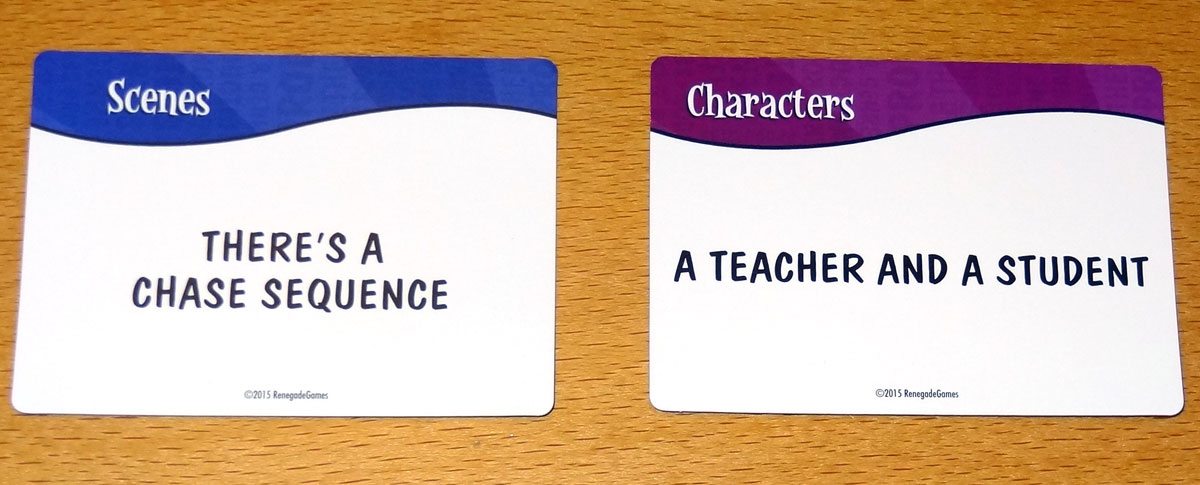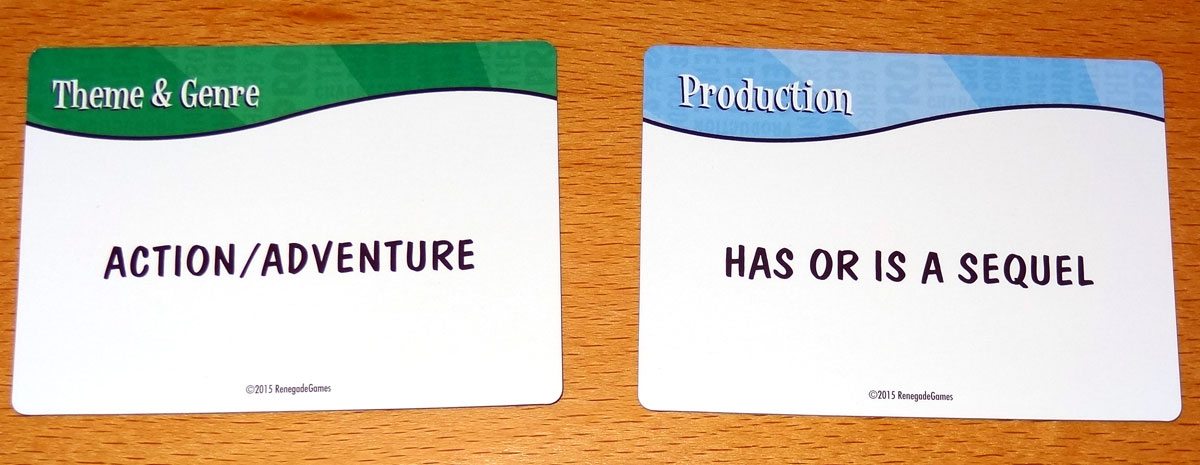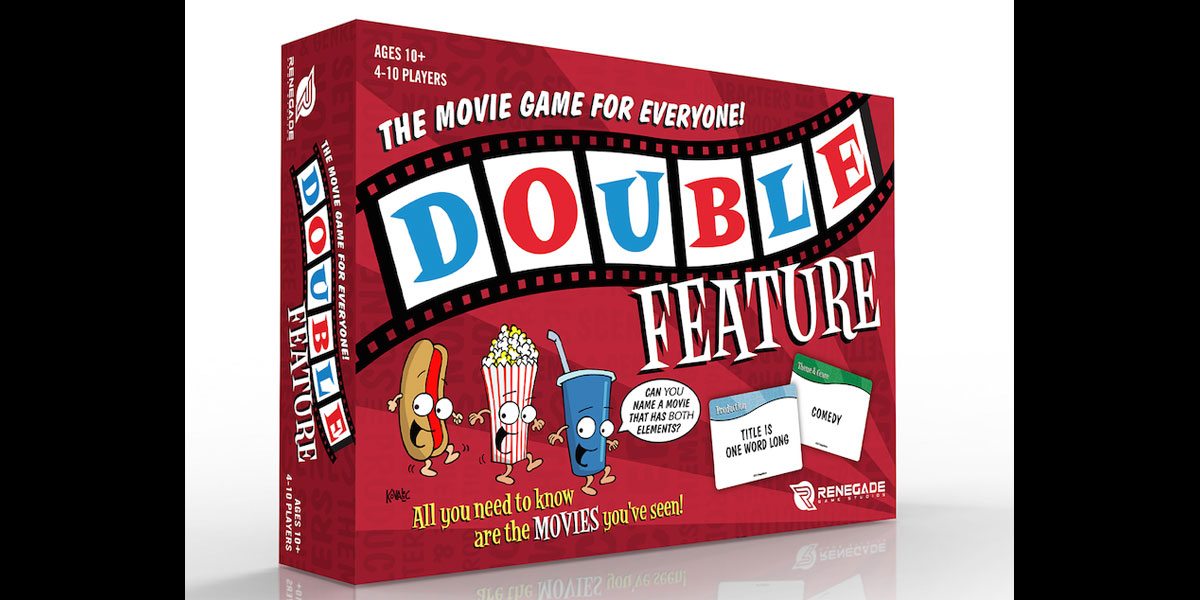Quick: can you name a comedy that involves time travel or a countdown? How about a kids’ movie or family movie in which a character changes identity? If so, then you’re ready to play Double Feature.
At a glance: Double Feature is a movie-based party game for 3 to 10 players, ages 10 and up, and takes about half an hour to play. (The box says “4-10 players” but there are options for fewer players, too.) It retails for $20.

Components:
120 cards: 20 each in 6 categories: Characters, Props, Production, Scenes, Setting, and Theme & Genre.
The cards are pretty simple, color-coded on both front and back. The backs feature little illustrations by John Kovalic, and the fronts have just the category name along with the associated element.

The box is quite a bit bigger than necessary. 120 cards is only slightly more than two standard poker decks, but Double Feature comes in a box the size of a hardcover novel. If I were going to travel with this game, I’d probably just throw a couple of rubber bands around the cards and toss it into a bag.
How to play
The goal is to score points by naming movies that link two elements–the number of points required to win depends on the number of players.
Shuffle each category deck separately. Players take turns being the Director, who flips and reads the card but doesn’t participate. Before play begins, the first Director will choose any category and flip the top card over onto the table.

To play, the Director first reads aloud the card that is on the table, and then chooses a different category and flips over a card and reads that one aloud as well. All other players race to name a movie that links the two cards, calling out titles out loud. The Director acts as judge.
When somebody names a movie that links the two cards, that player takes the older card as a point, and the next player becomes Director.
There are some additional rules and restrictions, like it must be a commercially released movie, and that you can’t use the same title or franchise twice in a row. There are also rules for drawing a third card if nobody comes up with any answers for a while, but that’s mostly it.
The game ends when a player reaches the points goal.

The Verdict
Double Feature is a remake of Cineplexity, first released in 2007, though there were some changes made, I believe to make the game work better for people who aren’t movie buffs. For instance, the “Actor” category has been removed, so you wouldn’t have to name a movie that features a particular actor.
I’ve played a few times, and although there is a points goal based on the number of players, I’ve found that people like to just keep going for a while. The Director rules are also flexible–you can just have one person flip all the cards and everyone can guess, if you like–but the Director does have a slight advantage because they see the card first and can start thinking of titles even before they’ve finished reading the card aloud.
Depending on who you’re playing with and how quickly people tend to answer, you sometimes run into that brain freeze phenomenon where you simply can’t think of a word even though you can picture it. (Think Anomia or even the classic party game Taboo.)
The game is billed as “the movie game for everyone” because you don’t have to be a movie buff–“all you need to know are the movies you’ve seen.” However, it does still help to be able to recall those movies, and people who have an encyclopedic knowledge of films are still going to be at an advantage. For the most part, though, the elements on the cards are fairly broad, and I haven’t had to flip a third card very often. The trickier ones for me are “Production” cards that specify a decade in which a film is released.

One group liked to see how often they could use a Star Wars film as the answer. I’m sure you could set other requirements to suit your group’s tastes, too.
Double Feature is definitely a party game so it’s good for a big group and works well as an ice breaker at the start of a game night. If you’re not too concerned about scoring, you can start it up while you’re still waiting for people to arrive, and people can join in anytime. While it doesn’t require much in the way of strategy, even hardcore gamers will enjoy a few rounds if they like movies. (If you hate movies or never watch them, then this is probably not the game for you–but you didn’t have to read this far to figure that out.)
Look for Double Feature at your local game store, or buy it from Amazon.
Disclosure: I received a review copy of this game.





